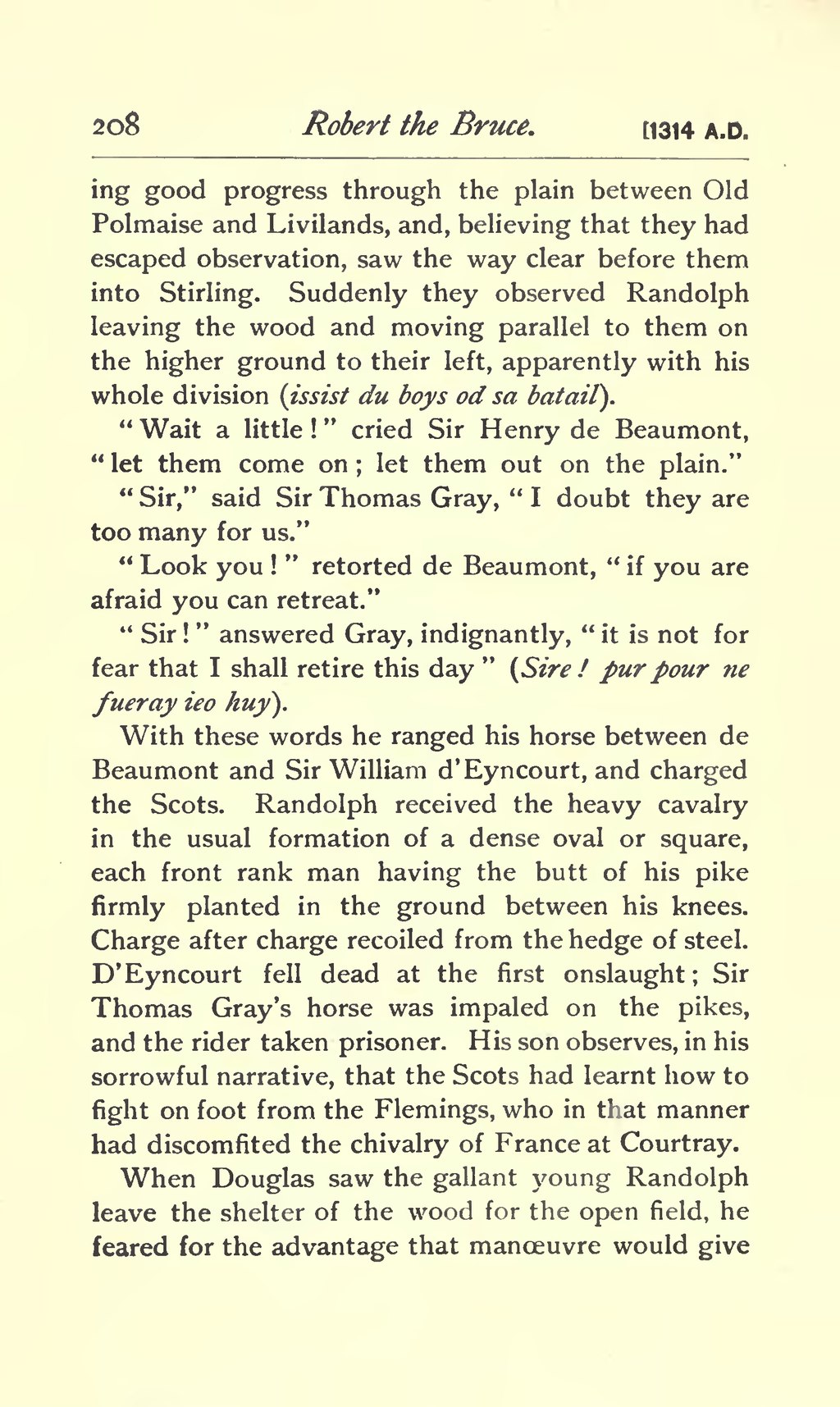ing good progress through the plain between Old Polmaise and Livilands, and, believing that they had escaped observation, saw the way clear before them into Stirling. Suddenly they observed Randolph leaving the wood and moving parallel to them on the higher ground to their left, apparently with his whole division (issist du boys od sa batail).
"Wait a little!" cried Sir Henry de Beaumont, "let them come on; let them out on the plain."
"Sir," said Sir Thomas Gray, "I doubt they are too many for us."
"Look you!" retorted de Beaumont, "if you are afraid you can retreat."
"Sir!" answered Gray, indignantly, "it is not for fear that I shall retire this day" (Sire! pur pour ne fueray ieo huy).
With these words he ranged his horse between de Beaumont and Sir William d'Eyncourt, and charged the Scots. Randolph received the heavy cavalry in the usual formation of a dense oval or square, each front rank man having the butt of his pike firmly planted in the ground between his knees. Charge after charge recoiled from the hedge of steel. D'Eyncourt fell dead at the first onslaught; Sir Thomas Gray's horse was impaled on the pikes, and the rider taken prisoner. His son observes, in his sorrowful narrative, that the Scots had learnt how to fight on foot from the Flemings, who in that manner had discomfited the chivalry of France at Courtray.
When Douglas saw the gallant young Randolph leave the shelter of the wood for the open field, he feared for the advantage that manœuvre would give
